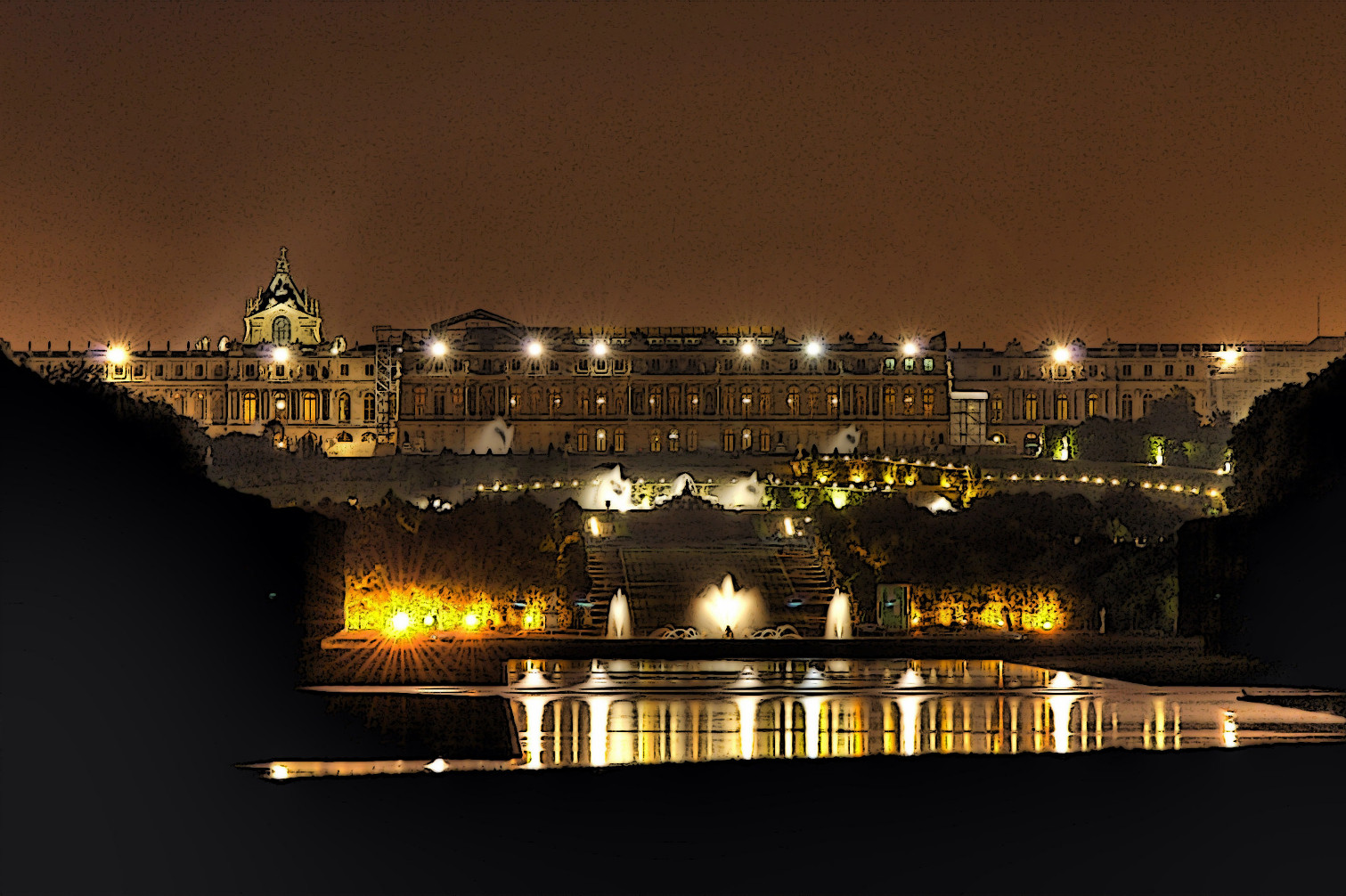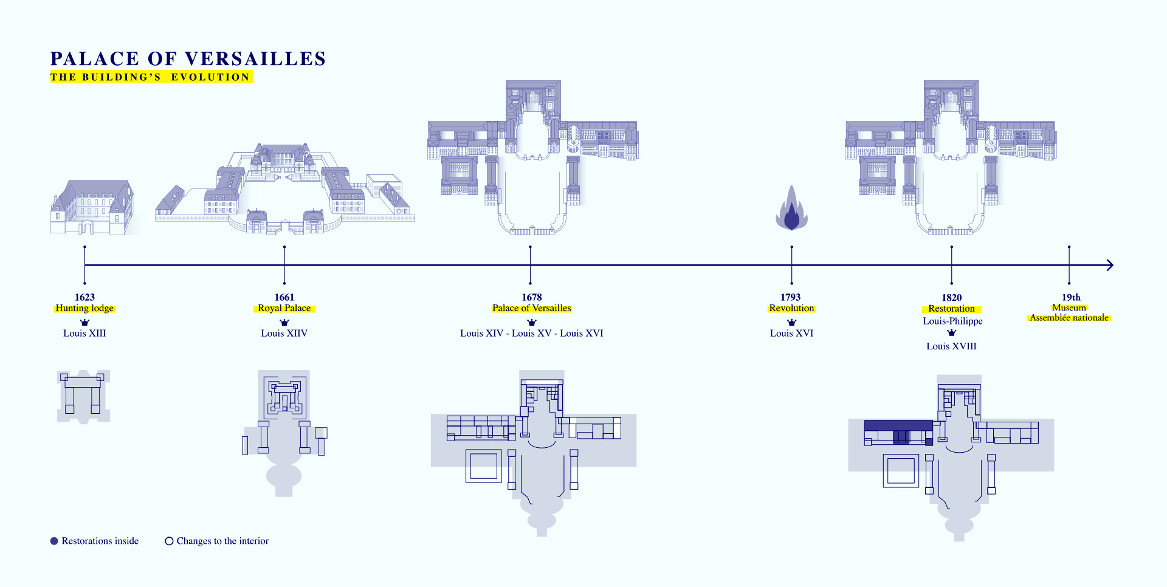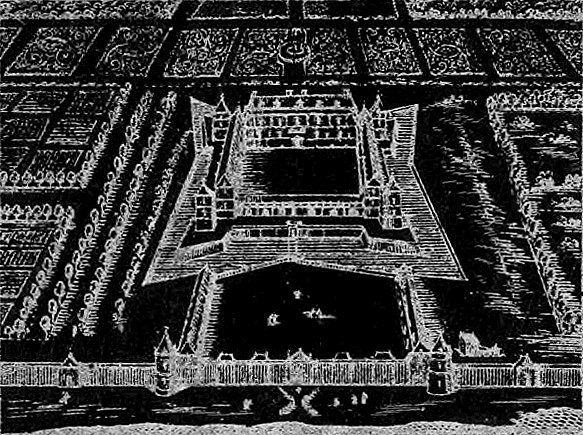Difference between revisions of "Palace of Versailles"
(→Louis XIV) |
(→Ancien Régime) |
||
| Line 18: | Line 18: | ||
== Ancien Régime == | == Ancien Régime == | ||
[[File:Versailles 1652.jpg]] | [[File:Versailles 1652.jpg]] | ||
| − | + | <br> | |
| + | <br> | ||
=== Louis XIII === | === Louis XIII === | ||
[[File:LouisXIII.jpg]] | [[File:LouisXIII.jpg]] | ||
Revision as of 23:50, 9 July 2016
Contents
Introduction
The Palace of Versailles, or simply Versailles, is a royal château in Versailles in the Île-de-France region of France. It is also known as the Château de Versailles.
When the château was built, Versailles was a country village; today, however, it is a wealthy suburb of Paris, some 20 kilometres (12 miles) southwest of the French capital. The court of Versailles was the centre of political power in France from 1682, when Louis XIV moved from Paris, until the royal family was forced to return to the capital in October 1789 after the beginning of the French Revolution. Versailles is therefore famous not only as a building, but as a symbol of the system of absolute monarchy of the Ancien Régime.
Palatial Evolutions
Origins
The earliest mention of the name of Versailles is found in a document which predates 1038, the Charte de l'abbaye Saint-Père de Chartres (Charter of the Saint-Père de Chartres Abbey), in which one of the signatories was a certain Hugo de Versailliis (Hugues de Versailles), who was seigneur of Versailles.
During this period, the village of Versailles centered on a small castle and church and the area was governed by a local lord. Its location on the road from Paris to Dreux and Normandy brought some prosperity to the village but, following an outbreak of the Plague and the Hundred Years' War, the village was largely destroyed and its population sharply declined. In 1575, Albert de Gondi, a naturalized Florentine who gained prominence at the court of Henry II, purchased the seigneury of Versailles.
Ancien Régime
Louis XIII
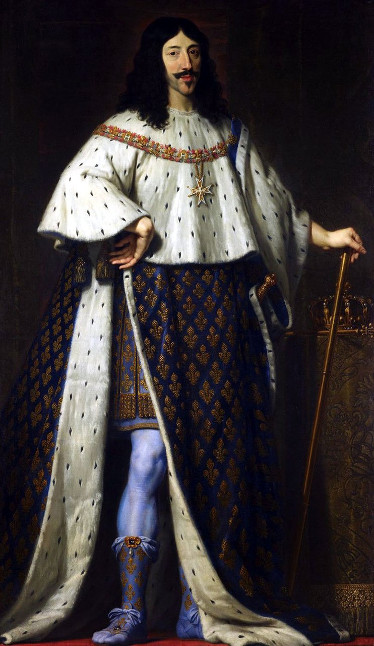
In the early seventeenth century, Gondi invited Louis XIII on several hunting trips in the forests surrounding Versailles. Pleased with the location, Louis ordered the construction of a hunting lodge in 1624. Designed by Philibert Le Roy, the structure, a small château, was constructed of stone and red brick with a based roof. Eight years later, Louis obtained the seigneury of Versailles from the Gondi family and began to make enlargements to the château.
A vignette of Versailles from the 1652 Paris map of Jacques Gomboust (fr) shows a traditional design: an entrance court with a corps de logis on the far western end, flanked by secondary wings on the north and south sides, and closed off by an entrance screen. Adjacent exterior towers were located at the four corners with the entire structure surrounded by a moat. This was preceded by two service wings, creating a forecourt with a grilled entrance marked by two round towers. The vignette also shows a garden on the western side of the château with a fountain on the central axis and rectangular planted parterres to either side.
Louis XIV had played and hunted at the site as a boy. With a few modifications, this structure would become the core of the new palace.
Louis XIV
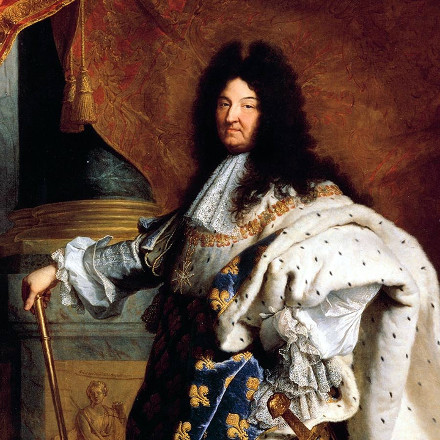
Louis XIII's successor, Louis XIV, had a great interest in Versailles. He settled on the royal hunting lodge at Versailles and over the following decades had it expanded into one of the largest palaces in the world. Beginning in 1661, the architect Louis Le Vau, landscape architect André Le Nôtre, and painter-decorator Charles Lebrun began a detailed renovation and expansion of the château. This was done to fulfill Louis XIV's desire to establish a new centre for the royal court. Following the Treaties of Nijmegen in 1678, he began to gradually move the court to Versailles. The court was officially established there on 6 May 1682.
By moving his court and government to Versailles, Louis XIV hoped to extract more control of the government from the nobility, and to distance himself from the population of Paris. All the power of France emanated from this centre: there were government offices here, as well as the homes of thousands of courtiers, their retinues, and all the attendant functionaries of court. By requiring that nobles of a certain rank and position spend time each year at Versailles, Louis prevented them from developing their own regional power at the expense of his own and kept them from countering his efforts to centralise the French government in an absolute monarchy. The meticulous and strict court etiquette that Louis established, which overwhelmed his heirs with its petty boredom, was epitomised in the elaborate ceremonies and exacting procedures that accompanied his rising in the morning, known as the Lever, divided into a petit lever for the most important and a grand lever for the whole court. Like other French court manners, étiquette was quickly imitated in other European courts.
The expansion of the château became synonymous with the absolutism of Louis XIV. In 1661, following the death of Cardinal Mazarin, chief minister of the government, Louis had declared that he would be his own chief minister. The idea of establishing the court at Versailles was conceived to ensure that all of his advisors and provincial rulers would be kept close to him. He feared that they would rise up against him and start a revolt. He thought that if he kept all of his potential threats near him, they would be powerless. After the disgrace of Nicolas Fouquet in 1661 – Louis claimed the finance minister would not have been able to build his grand château at Vaux-le-Vicomte without having embezzled from the crown – Louis, after the confiscation of Fouquet’s state, employed the talents of Le Vau, Le Nôtre, and Le Brun, who all had worked on Vaux-le-Vicomte, for his building campaigns at Versailles and elsewhere. For Versailles, there were four distinct building campaigns (after minor alterations and enlargements had been executed on the château and the gardens in 1662–1663), all of which corresponded to Louis XIV’s wars.
